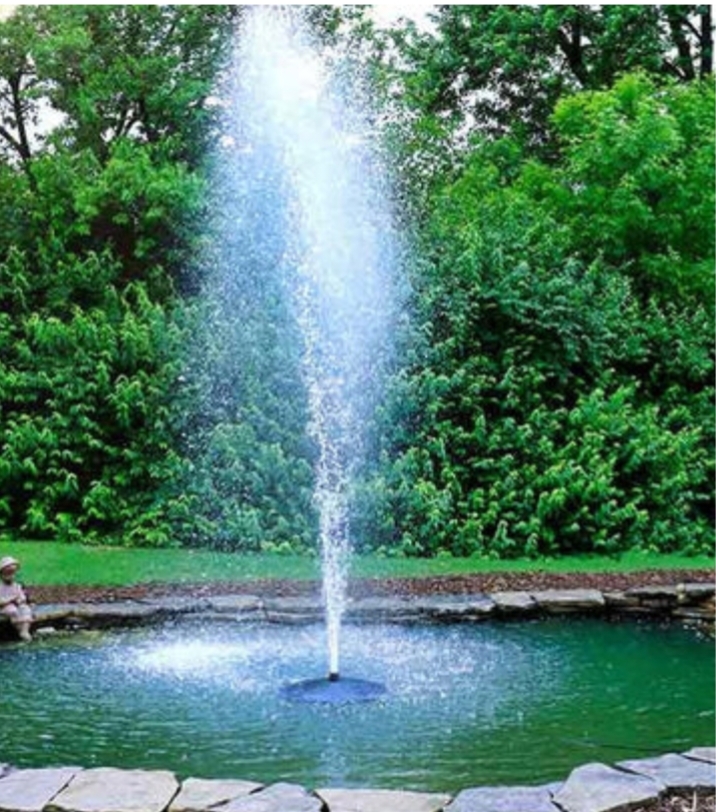A well-chosen fountain can transform any pond into a picturesque focal point, enhancing both the aesthetic appeal and ecological balance of the water feature. However, selecting the appropriate fountain size for your pond involves more than just picking a design that catches your eye. The size of the fountain must complement the pond’s dimensions and purpose to ensure it functions effectively and looks harmonious in its surroundings. This guide will walk you through the key considerations to help you determine the perfect size fountain for your pond.
Determining The Pond’s Dimensions
Before you purchase floating pond fountains, it’s essential to understand the size and shape of your pond. A fountain that’s too large for a small pond can overwhelm the space, while a fountain that’s too small in a large pond may go unnoticed and fail to create the desired visual impact. Measure the length, width, and depth of your pond to get an accurate understanding of its dimensions.
For rectangular or square ponds, multiply the length by the width to determine the surface area. If your pond has an irregular shape, you can approximate its size by breaking it down into sections that are easier to measure. Once you have these dimensions, it becomes easier to match them with the appropriate fountain size.
Always purchase floating pond fountains that are specifically designed to suit the size of your pond, ensuring they provide the right amount of aeration and visual appeal.
Considering The Water Flow And Aeration Needs
The size of the fountain should also align with the pond’s water flow and aeration requirements. Proper aeration is crucial for maintaining the health of your pond’s ecosystem, as it helps circulate oxygen throughout the water, supporting fish and plant life while preventing algae buildup.
Larger ponds generally require more robust fountains with higher flow rates to achieve adequate aeration. These fountains can move larger volumes of water, ensuring that all areas of the pond receive sufficient oxygen. On the other hand, smaller ponds may need less powerful fountains to avoid creating overly turbulent water conditions that could disrupt aquatic life.
When deciding on the fountain size, also consider the type of pump that will be needed. Submersible pumps are typically sufficient for small to medium ponds, while larger ponds may benefit from external pumps that offer more power and efficiency.
Balancing Aesthetics And Functionality
While it’s important for the fountain to meet the pond’s aeration needs, it’s equally crucial to consider the aesthetic aspect. The size and style of the fountain should complement the pond’s surroundings and the overall landscape design.
A tall, dramatic fountain might suit a formal garden or large estate, where its grandeur can be fully appreciated. Conversely, a more subtle fountain may be better suited for a natural or woodland setting, where it can blend seamlessly into the environment.
Consider the height and spread of the water spray as well. A fountain that shoots water too high in a small pond might result in excessive splashing and water loss, while a low spray in a large pond could seem underwhelming. Balancing the aesthetics with functionality ensures that your fountain not only looks good but also contributes positively to the pond’s health.
For further insight into creating a balanced pond ecosystem, check out this guide on maintaining healthy water features, which provides tips on achieving harmony between form and function.
Factoring In Pond Depth And Climate
The depth of your pond and the local climate are other important factors when selecting the right size fountain. Deeper ponds often require fountains with longer shafts to reach the water’s surface, while shallow ponds may need shorter fountains to avoid excessive noise and splashing.
In colder climates, you might need to remove or winterize your fountain to prevent damage from freezing temperatures. Larger fountains with complex systems can be more challenging to maintain during winter, so it’s important to consider how much maintenance you’re willing to handle.
Shallow ponds, especially in warmer climates, may experience more rapid evaporation if the fountain is too large or the spray pattern too wide. This can lead to frequent water level adjustments and increased maintenance. Therefore, selecting a fountain that aligns with your pond’s depth and climate conditions will save you time and effort in the long run.
Explore more tips on seasonal pond care in this blog post about pond maintenance, which covers everything from winter preparation to summer upkeep.
Budgeting For The Right Fountain Size
Finally, your budget will play a significant role in determining the size of the fountain you can afford. Larger fountains, especially those with elaborate designs or advanced features like lighting or multiple spray patterns, can be more expensive. However, investing in a quality fountain that matches your pond’s size and needs can save you money on maintenance and replacements in the future.
When budgeting, also consider the cost of the pump, installation, and any additional accessories or maintenance tools you might need. A slightly higher initial investment in the right-sized fountain can lead to better long-term results, both aesthetically and functionally.
Opt for a fountain that fits within your budget but doesn’t compromise on the key factors discussed. A well-chosen fountain will enhance your pond’s beauty, promote a healthy ecosystem, and provide years of enjoyment.
Conclusion
By taking the time to assess the above factors, you can purchase floating pond fountains that perfectly match your pond’s requirements, creating a stunning and functional water feature that enhances your outdoor space. Whether your goal is to boost aeration, add visual interest, or simply enjoy the soothing sound of water, the right fountain will bring your pond to life in the most beautiful way.
